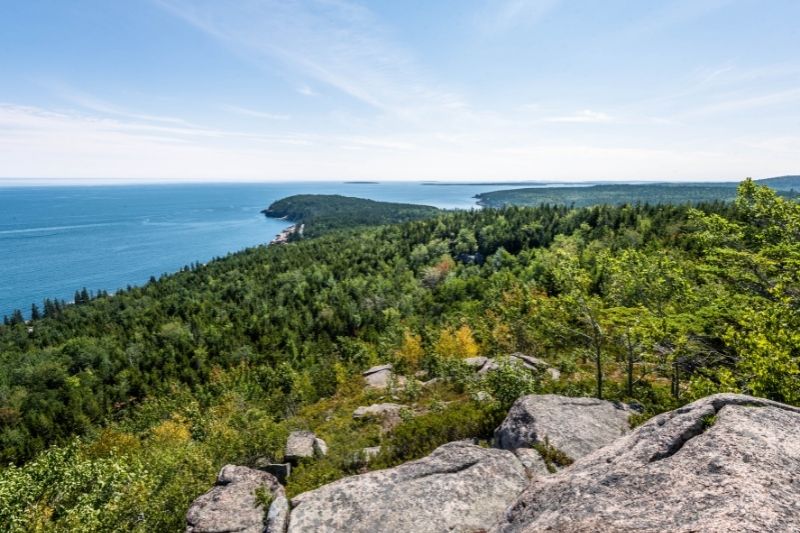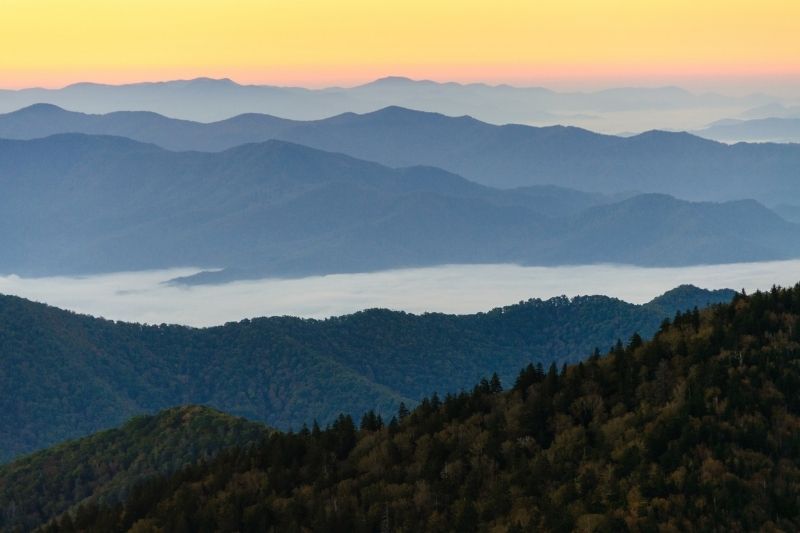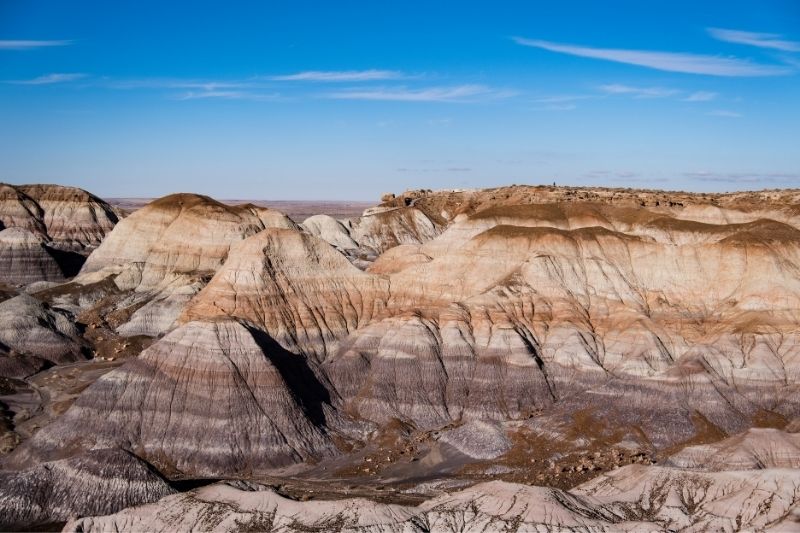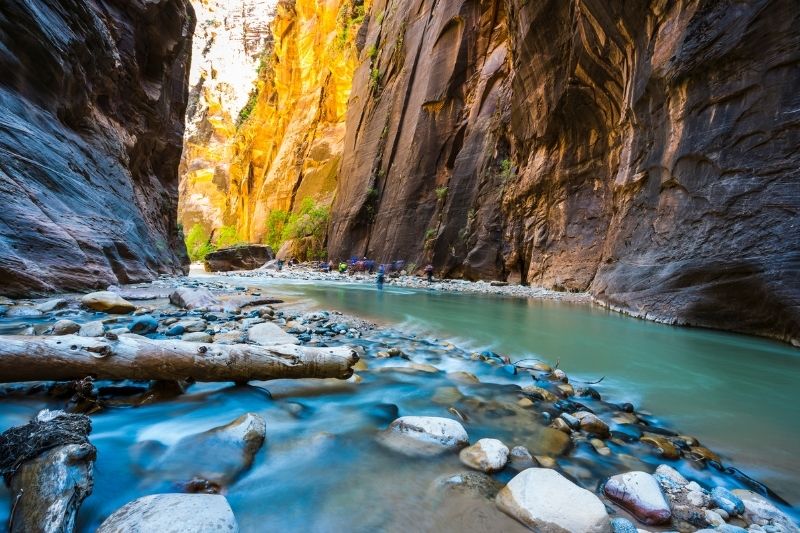America’s National Parks are more than just hiking trails into mountain valleys, campsites overlooking sweeping vistas and unparalleled chances to watch moose and elk run wild. Many are famous historical sites, battlefields and small parks with big-time scenery. Some National Parks reel in millions of visitors a year, though a crowded park is often not as actually crowded as you might think. There is plenty of room to roam.
Bryce Canyon National Park

Bryce Canyon, named after an early settler in the area, Ebenezer Bryce, is located in southern Utah (along with 4 other Utah National Parks) and is known for its bright red hoodoos, which are spire-shaped rock formations that can only be found in a few other places on earth, like Cappadocia, Turkey. Most visitors to the park spend their time hiking the many trails and viewing the expansive Bryce Amphitheater from the main viewpoints. There are overlooks at Sunrise Point, Sunset Point, Inspiration Point and Bryce Point.
Grand Canyon National Park

The Grand Canyon lies on the Colorado Plateau in northwest Arizona and was carved over millions of years by the Colorado River. The maze of canyons, fissures, and gorges intertwine and merge to create one of the world’s most amazing natural wonders. You can stay within the park at one of the lodges on the South Rim and take time to experience all the different things the park has to offer. Or you can stop for a few hours to take in the views enroute to the next destination on your road trip.
Acadia National Park

Located on the rugged coast of Maine, Acadia National Park encompasses over 47,000 acres of granite-domed mountains, woodlands, lakes and ponds, and ocean shoreline. It’s one of the top 10 most-visited national parks in the United States. Declared as a national park in 1916 by then president Woodrow Wilson, this park is a dream to visit, with over 60 miles of coastline to explore. It might look small on a map, but it encompasses Mount Desert Island, Schoodic Peninsula, Isle au Haut, and more outer islands, with so much to see and do.
Crater Lake National Park

Crater Lake is located in Oregon and is famous for the intense blue color of its waters and for its spectacular views. There are extreme cliff drops all around the lake and it’s simply beautiful. You can drive the whole loop around Crater Lake and view the lake from many different points. You’ll see out across the lake, Wizards Island, and all the dramatic cliff faces. During the summer there’s many hiking trails, like Garfield Peak Trail and The Watchman Peak Trail that are very popular for dramatic scenery.
Grand Teton National Park

Located in northwestern Wyoming, Grand Teton National Park is home to stunning mountain scenery and a diverse array of wildlife. Home to over 200 miles of scenic hiking trails, the snake river, and gorgeous mountain ranges, the Grand Teton National Park is a beautiful and underrated national park. Being so near to Yellowstone, the Grand Teton gets overlooked, but those who do get there are well rewarded. Some of the more popular areas include Jenny Lake and the Colter Bay Area where there’s hiking, a visitor center, camping, cabins, and lots of water activities.
Great Smoky Mountains National Park

Ridge upon ridge of endless forest straddle the border between North Carolina and Tennessee in Great Smoky Mountains National Park, one of the largest National Park areas in the Eastern United States. It is also the most visited National Park. This park preserves beautiful wildlife, fauna, and early Appalachian mountain culture. Some natural beauties of this park include black bears, an abundance of wildflowers, and tall forests.
Mount Rainier National Park

Mt Rainier National Park was established in 1899 and covers 235,625 acres (97% is designated wilderness), which includes Mount Rainier at 14,410 feet high, which is an active volcano encased in over 35-square-miles of snow and ice. The park contains outstanding examples of old growth forests and subalpine meadows. Wildlife abounds in the park’s ecosystems, including meadows full of wildflowers which draw crowds during the spring and summer, particularly in the Paradise area, where the Henry M. Jackson Memorial Visitor Center is located. From there, you can embark on any number of short and long hikes.
Petrified Forest National Park

Petrified Forest National Park, east of Flagstaff, Ariona, is a surprising land of scenic wonders and fascinating science. The park features one of the world’s largest and most colorful concentrations of petrified wood and the multi-hued badlands known as the Painted Desert. The Painted Desert is an amazing geological feature. It’s composed of soft clays, volcanic ash, sandstone, and other types of rock. This combination of different materials is what gives the desert it’s distinctive color variations that it’s known so well for.
Rocky Mountain National Park

Established on January 26, 1915, Rocky Mountain National Park is a living showcase of the grandeur of the Rocky Mountains. The 415 square miles show off spectacular mountain environments. Travel along Trail Ridge Road – which crests at over 12,000 feet including many overlooks to experience the subalpine and alpine worlds – along with over 300 miles of hiking trails, wildflowers, and wildlife. Visit the Holzwarth Historic Site for a look into homesteading and the lives of homesteaders in the early 1900s.
Yellowstone National Park

In 1872, President Ulysses S. Grant designated Yellowstone a national park and it has since become one of the most famous National Parks, largely due to the Old Faithful geyser. The park is located primarily in Wyoming, with parts in Idaho and Montana. It’s home to a very unique ecosystem that includes all types of flora and fauna. You’ll have a chance to glimpse wolves, bison, elk, and bears among others in the Hayden and Lamar Valleys. It’s not uncommon for a black bear to wander across the road, stopping traffic as people strain to watch the action unfold before them.
Yosemite National Park

Yosemite National Park is one of the most well-known and appreciated national parks the United States has to offer. From the time of the famed naturalist John Muir until now, millions of people have been left in awe at the natural wonder and majesty of the sheer granite cliffs, massive stands of old-growth forest, abundant wildlife, and dozens of other examples of pure, natural beauty that Yosemite offers. You can easily get around to see many of the top sights in Yosemite in two days because many of them are quite close together.
Olympic National Park

Olympic National Park is located in the Northwest corner of Washington State. It’s one of the most beautiful places to get away and experience nature in the Pacific Northwest. There are dozens of reasons to visit Olympic National Park, which encompasses several ecosystems. There’s an old growth rain forest, glacier-capped mountains. and many miles of wild and rugged coastline.
Canyonlands National Park

Canyonlands National Park is, at first glance, exactly what the name implies. Miles upon miles of canyons and buttes all colored in vivid reds and oranges. But with closer inspection, this park is so much more than just canyons and desert. The park is actually split into three different sections: Island in the Sky, The Needles, and The Maze. Each section offers a new look into the landscape and history of this amazing national park.
Arches National Park

Arches National Park is a wonder to behold. Boasting over 2,000 rock arches alone, this impressive park has some of the most unique landscapes and rock formations in the world. As well as the arches it’s named for, the park also has pinnacles, rock fins, and giant balanced rocks that are hard to find anywhere else. This red-rock wonderland is an ancient masterpiece whose creation started 65 million years ago.
Capitol Reef National Park

The Capitol Reef National Park, located in the south-central area of Utah, is home to many red-rock geologic wonders. The views are a spectacular mix of dry desert and verdant forests, in this collision of red-rocks and grassland. This ancient valley has been the resting place of civilizations of people from early Native Americans to settlers. The Fruita District alone has a rich history that is still visible today.
Zion National Park

Zion National Park lives up to the decades of praise. This park was the first national park to be declared in the state, becoming a park in 1919. The park itself is located within an active volcano field called the Santa Clara, and there are several geologic features from volcanic eruptions that can be viewed inside the park. Along the Kolob-Terrace Road and Lava Point, as well as in Crater Hill, there are different types of rock patterns that formed due to basalt flows after an eruption.

Laura Lynch, creator and writer of Savored Journeys, is an avid world traveler, certified wine expert, and international food specialist. She has written about travel and food for over 20 years and has visited over 75 countries. Her work has been published in numerous guidebooks, websites, and magazines.

